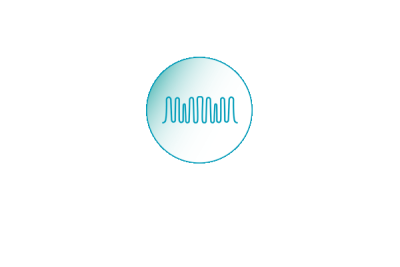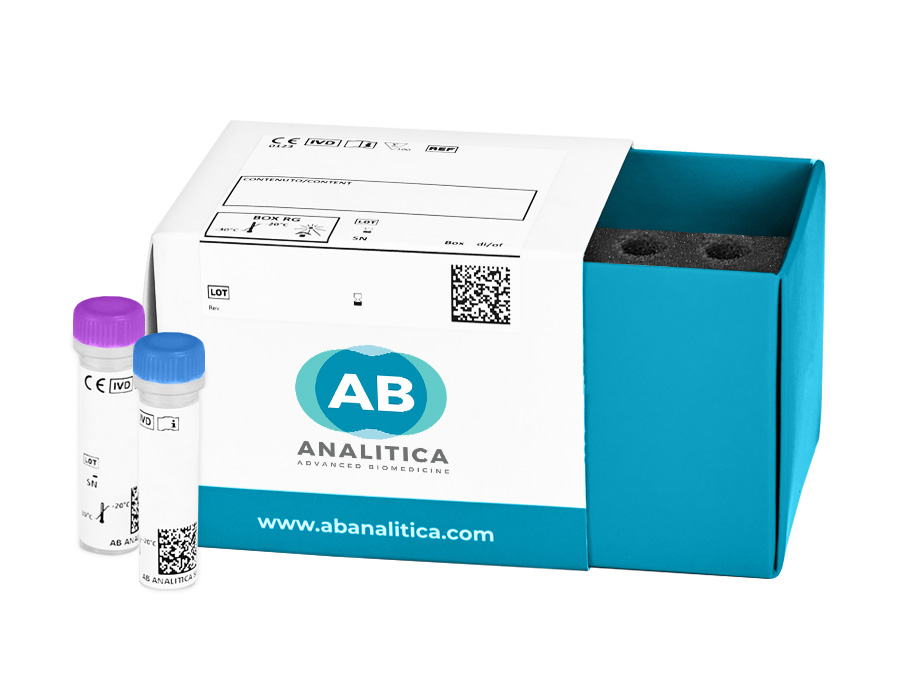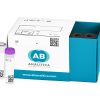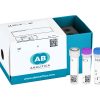Description
The REALQUALITY RS-AML1-ETO kit is an IVD for detection and quantification of translocation t(8;21)(q22;q22), which involves the AML1 gene in chromosome region 21q22 and the ETO gene in chromosome region 8q22. The test is based on amplification of cDNA corresponding to the fusion transcript AML1-ETO.
Product Characteristics
- The assay includes dUTP/UNG system for preventing carry-over contamination and a fluorescence normalizer
- The assay requires only 5 µL of cDNA extracted
- The assay shares the same thermal profile of REALQUALITY RS-INV 16 and RS-WT1 kits.
- If used in combination with the REALQUALITY RQ-AML1-ETO STANDARD, it allows the quantification of AML1-ETO transcripts, normalizes on the housekeeping gene ABL.
- Validated on main Real time PCR instruments
- The device is developed in accordance with the guidelines of Europe Against Cancer and Italian and international recommendations
Kit content
Kit contains:
- Ready-to-use reagents for Real time PCR
- Positive controls
Further Information
The t(8;21)(q22;q22) translocation leads to a fusion of the AML1 gene (chromosome region 21q22) and the ETO gene (chromosome region 8q22). The breakpoints are located between exon 5 and 6 of the AML1 gene and upstream of exon 2 of the ETO gene. The fusion protein consists of the N-terminal DNA binding domain of AML1 (an essential transcription factor of hematopoiesis) and the almost complete ETO protein (a co-repressor of various transcription factors). The t(8;21)(q22;q22) translocation is usually linked to the Acute Myeloid Leukemia (AML). It has been found in almost 15% of all AML cases and in nearly 40% of the cases of the AML FAB M2 subtype. Incidence of AML is approximately 3.5 cases per 100,000 persons per year. Although AML occurs in all age groups, frequency rises with increasing age. Molecular analysis of the t(8;21)(q22;q22) translocation was shown to be very important due to being linked to positive prognosis and a good response to certain therapeutic agents, like cytosine arabinoside Detection of this translocation can be performed at the molecular level as follows: total RNA is extracted from clinical samples; the RNA is transcribed into cDNA (reverse transcription); and the regions of interest are amplified from the cDNA. Detection and analysis of the translocation not only delivers valuable information for diagnosis and prognosis of these types of leukemia, but most importantly provides the means to monitor the Minimal Residual Disease (MRD). The term Minimal Residual Disease describes the persistence of a low number of neoplastic cells in the body of a cancer patient during chemotherapy and/or a symptomless remission phase which cannot be detected using standard cytology methods.
Ordering Information
| Code | Product | PKG |
|---|---|---|
| RQ-S59-48 | REALQUALITY RQ-AML1-ETO | 48 tests |
| RQ-S59-96 | REALQUALITY RQ-AML1-ETO | 96 tests |









